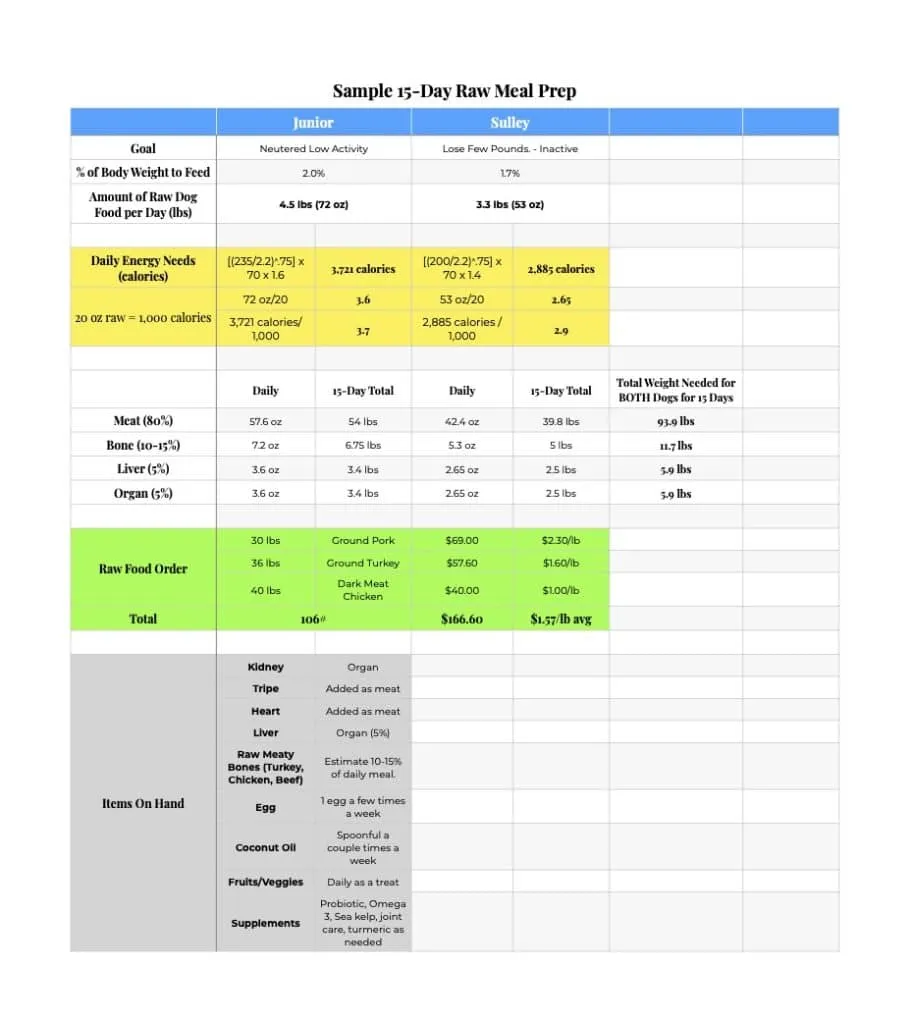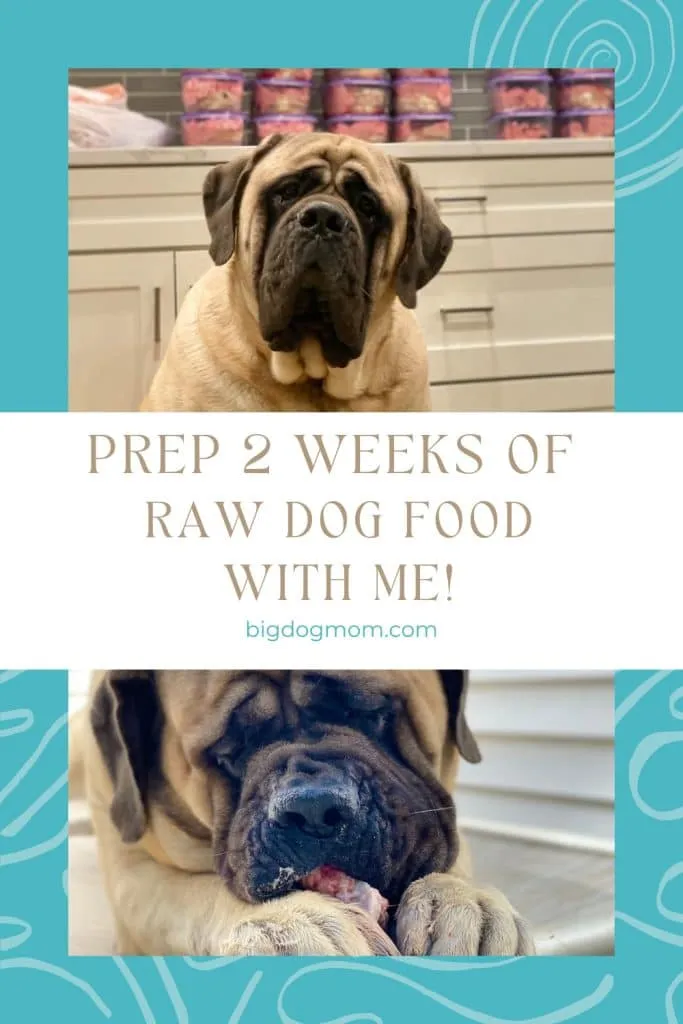Preparing raw dog food for large breeds like Mastiffs can seem daunting, especially when daily meal prep feels overwhelming. Large dogs consume substantial amounts, making bulk raw dog food meal prep essential for efficiency. This easy step-by-step guide shows how to prepare 15 days of balanced raw meals confidently, saving time while meeting nutritional needs. Whether you’re new to raw feeding or scaling up for big pups, this method rivals kibble convenience.
If you’re transitioning your large dog to a raw diet, start by prioritizing key factors like caloric needs and variety. For instance, homemade salmon dog food recipes vet approved can add healthy fish variety, supporting joint health in seniors.
Raw Feeding Priorities for Large Dogs
Before diving into raw dog food meal prep, establish your priorities. This ensures your bulk raw feeding plan aligns with your dog’s age, activity, and health goals. Not every element applies universally, but use this as a framework.
Nutritional Goals First
For aging large dogs like neutered Mastiffs with lower activity, focus on controlled calories to maintain ideal weight. Excess pounds strain hips and joints, reducing mobility. Aim for lighter body condition to boost cardiovascular health and longevity, per veterinary guidelines from sources like the American Kennel Club.
Calculate daily energy requirements simply: Convert pounds to kilograms (weight / 2.2), raise to 0.75 power, multiply by 70, then apply an activity factor (e.g., 1.4 for inactive adults). Tools from sites like perfectlyrawsome.com provide precise charts.
 Step-by-step raw dog food meal prep process for large breed dogs
Step-by-step raw dog food meal prep process for large breed dogs
Your goals might differ—puppy growth requires higher calories, while active workers need more. Consult a vet to tailor, ensuring E-E-A-T standards with expert-backed ratios.
Emphasize Variety in Proteins
A complete raw diet demands diverse proteins; single-source like chicken alone lacks balance. Rotate turkey, pork, beef, chicken, and fish monthly. For this prep, turkey, pork, and dark chicken provided variety when sardines were unavailable—salmon added later for omega-3s.
Veterinarians stress 80% muscle meat, 10% bone, 10% organs (5% liver, 5% secreting like kidney). This prevents deficiencies, as unbalanced diets risk health issues.
Factor in Freezer and Budget Space
Large dogs demand ample storage: Dedicate a chest freezer for 30 days’ worth. Assess space for bulk buys and thawing. Budget-wise, shop co-ops for under $2/lb; avoid premium cuts like lamb for cost control.
Local sources like farms or butchers yield free organs and bones—kidney, tripe, liver from family cows or Amish scraps kept costs low here.
Calculating Calories and Portions Accurately
Raw dog food meal prep hinges on precise math to avoid over/underfeeding.
For a 200-lb inactive Mastiff: ~2,885 daily calories. A 235-lb one at 1.6 factor: 3,721 calories. Conversion: 19-20 oz raw ≈ 1,000 calories.
Avoid blanket 2-5% body weight rule—it overfeeds large dogs massively (e.g., +1 lb daily excess). Cross-check percentages (1.7-2% here) with calories, erring under for safety. Monitor stools and weight.
 Sample 15-day raw dog food meal prep calculations for two large Mastiffs
Sample 15-day raw dog food meal prep calculations for two large Mastiffs
For puppies, prioritize Ca:P ratio (1:1.2) to prevent dysplasia; vets warn against high-fat rapid growth.
Step-by-Step Bulk Raw Dog Food Meal Prep
Prep 15 days for two Mastiffs efficiently—adapt for your pack.
1. Set Body Weight Percentages
Use 1.7-2% for seniors/maintenance, verifying against calories.
2. Calculate Total for Days
Multiply daily totals by 15; split 80:10:5:5 (meat/bone/liver/secreting).
3. Inventory Check
Subtract on-hand items (organs, bones here covered needs).
4. Order from Co-Ops
Monthly bulk: 106 lbs meat sufficed, swapping sardines for sale chicken.
5. Prep Containers
64-oz plastic tubs hold daily portions minus bone/fish.
[6. Pickup and Portion
Saturday ritual: Thaw partially, divide meat (54 lbs one dog, 40 lbs other), add organs evenly via scale.
[7. Label Clearly
Note dog name, date, weights, ingredients, add-ons (bone critical).
[8. Thaw and Complete
Rotate 2-3 days in fridge; add 10-15% bone, omega-3s, probiotics, kelp daily; vary treats.
Ideal Scenarios for This Bulk Method
This raw dog food meal prep shines in:
- Travel: Prepped meals for sitters.
- Multi-Dog Homes: Weekly prep like family freezer meals.
- Cleanliness: One bulk handle reduces bacteria/mess vs. daily bags.
- Space Savings: Tidy fridge rotation over bulky bowls.
- Backup Stock: Frozen up to a year.
 Efficient raw dog food preparation for large breeds in bulk
Efficient raw dog food preparation for large breeds in bulk
Sanitize routinely—counters, bowls—with vet-approved cleaners.
Key Caveats for Safe Raw Feeding
No method is universal:
- Not a fixed recipe—adapt personally.
- Meals incomplete sans bone/organs/supplements.
- One meal/day shown; split for most.
- Bone approximate; adjust via stools (hard=less bone).
- Consult vets; test for balance periodically.
Overfeeding risks obesity; puppies need precision.
Final Thoughts on Raw Meal Prep for Large Dogs
Bulk raw dog food meal prep simplifies natural feeding for large dogs, matching kibble speed with superior nutrition. Prioritize calories, variety, and monitoring for success. Start small, scale up, and involve your vet for tailored advice.
Ready to try? Share your raw feeding tips below. Explore more on large breed care!
References
- Perfectly Rawsome: Calculate Meal Amounts for Adult Dogs
- Perfectly Rawsome: Puppy Calorie Requirements
- Big Dog Mom: Raw Diet for Dogs Made Simple
- American Kennel Club: Raw Feeding Guidelines
- Veterinary sources emphasize balance; always vet-check custom diets.
